Outstanding Educators of the Year Share Best Lessons & Gold Medals
By Dr. Pola Rosen
The Harvard Club was the venue for the 11th year of Education Update’s celebration of the Outstanding Educators of the Year. Amidst the rich, wood paneling of Harvard Hall on the main floor, with impressive paintings of former presidents looking down with seeming approval, teachers and principals garnered medals and awards for their work over the years.
Three Distinguished Leaders in Education received awards as well for their tireless efforts to improve the lives of students everywhere. Susan Fuhrman, President of Teachers College; Lisa Coico, President of The City College of New York; Mary Brabeck, Dean of the Steinhardt School of Education, NYU all received a standing ovation. Keynote speaker, CSA President Ernest Logan delivered a stirring message: “Look at all of you and what you do and have done . . . then think about the reasons why you’re being recognized today. So, when you read all the “Doom & Gloom” stories about public education in NYC and the quality of America’s teachers and school leaders, you’ll see there’s a huge disconnect between the picture that the media paints and the picture that we see in this room this morning. Thank you, Pola Rosen, friends and colleagues, and congratulations to all of the school leaders and teachers who are honored here today.”
TEACHERS
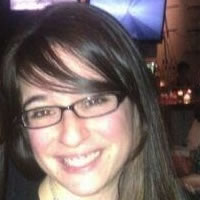 Jaya Bharne
Jaya Bharne
Gregorio Luperon High School, Manhattan
I teach Senior year English, so finding ways to keep my students involved up until the last day of classes is always a challenge. Ours is a non-traditional school in that we serve a 100% ELL population. During the 9th-11th grades, students spend time in language classes building foundational vocabulary and practicing the basics of academic language. The 12th grade is the first time that the kids are far along in their development to begin reading literature traditionally taught in high school. I structure my year around primarily American texts, with our class theme revolving around the feasibility and evolution of the American Dream in modern society. Our texts challenge the students to see the ways in which the American Dream is essentially linked to American identity, but how it can be an idealization of life that often works to one's disadvantage.
During our final weeks, I flip this idea on its head by showing my seniors films depicting dystopias - horrible visions of what our future may become if certain trends continue to escalate. One of my favorite lessons involves the movie GATTACA - I start by asking students whether or not they would ever want full control over the traits/characteristics of their child. Most answer no, until I start having them consider things like controlling for athleticism, intelligence or the absence of life-threatening diseases. This is usually when they start to reconsider possibly intervening in the natural order of things. I then have them imagine a future in which half of the population has chosen to select or "design" their children and half has chosen to abstain. The group is divided into Valids and Invalids. I play up the kinds of discrimination that these Invalids would face in this new society and the burden of perfection that would descend upon the Valids. Then, after the simulation, I ask the kids to consider whether the hiring practices are legal and/or ethical, and what structures would need to be in place to protect against the likely discrimination that would occur. Then, I ask them to consider whether discrimination is ever a good thing - wouldn't they want a doctor or teacher who had been "designed" to be of superior intelligence? I love to watch them struggle with these difficult questions and they are always passionate about the kind of future they want to live in and they want for their kids. It helps us see the works of American Literature we read within the ever-changing context of the American experience.
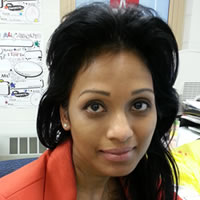 Enandanie Bherwani
Enandanie Bherwani
Instructional Coach/Testing Coordinator, The Rosa Parks School (Ps 254), Queens
A favorite lesson I used was a mathematics lesson on creating and displaying information on bar graphs. The children were divided into differentiated groups for their diverse needs. Directions and instructions were taught step by step to explain each component of the bar graph. Students were encouraged to compare and analyze the bar graph, using the data they collected. Multiple open-ended higher-order thinking questions were posed to challenge and inculcate good teaching and to prevent any misconceptions. Conclusions and inferences were drawn and discussed, based on the information gathered.
The students were able to connect simple bar graphs to concepts in their lives and in their world that would require them to read information on a bar graph. For example, my students learned about the climates of different countries and displayed this information on the bar graph, which permits them multiple entry points in mathematics and in social studies.
Learning styles are of paramount concern and I focus on promoting and providing multiple opportunities for my classroom to utilize their various learning modalities. Manipulatives, videos, charts, songs, stories and even poems on bar graphs were used to build and instill schema into this lesson. The Common Core Learning Standards in Math is my guideline to provide my students with multiple opportunities to critically think, question, wonder, and solve problems. This helps to build a solid mathematical foundation for students’ success in a classroom and in the real world.
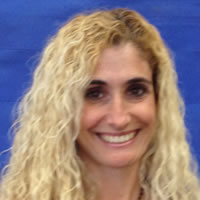 MariaElena Buckley
MariaElena Buckley
Public School 11, Staten Island
When thinking of a favorite lesson, what stands out in my mind is a unit I like to do with my students in the beginning of the year to bring forth a sense of family within our class community. I call it “Our Class Motto”. The students have an opportunity to read prior class mottos and eventually discover that this is something that the students from past years selected, believed in and followed. Next, the current students research exactly what a motto is and begin their journey to either create one on their own or choose one from a prior leader while having to prove to the others why it's perfect for "our class family". Eventually, the class vote which two are the closest fit and why. We have a debate with reasons why this particular motto is the best fit for our class. Finally, there's a final vote and a pledge to uphold it not just for the year but throughout their lives.
The purpose is to really instill a sense of family, loyalty and respect for themselves, their teammates and those around all of us. The children really enjoy it and learn from the beginning of the year that there are expectations that they have created for themselves. We are depending on one another, not just this year but always. Luckily, after this unit, they are fired up and ready to soar for the stars!
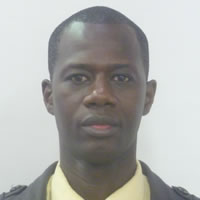 Aliou Diop
Aliou Diop
Academy For Scholarship And Entrepreneurship, Bronx
As a teacher with the New York City Department of Education, I draw inspiration from the words of Dr. Martin Luther King Jr., daily. He once stated “The function of education is to teach one to think intensively and critically”, and he believed that “Intelligence plus character - that is the goal of true education.” Dr. King’s words guide my planning for each lesson and give me the opportunity to share my passion for the classroom with my students; mentoring them to be their best.
At the Academy for Scholarship and Entrepreneurship, this year, we decided to implement writing in every classroom. The school-wide initiative was to use the TIEDS (Thesis, Introduction, Evidence, Development, and Summary) format to help our students improve their writing skills. Students wrote complete sentence to describe their ideas and solution(s) to a given problem. Recently, my Algebra 2 / Trigonometry students and I had work on comparing and contrasting the graphs of trigonometric functions such as f(x) = Asin (Bx) and g(x) = A’cos (B’x). At first, it seemed to be a challenge in a math class; however, with some patience and my support in my students’ abilities and the rigor in my classrooms, they did wonderful jobs. The challenging part was that students were used to either guessing the answer, not writing their answers in full sentences, or not answering short answer questions at all. Although the students were frustrated at first, I was patient with them as I explained that this would help them in the long run, not only with their Regents scores, but also with the rigorous college standards. Overall, as they started to write more, the students’ critical thinking skills increased, the students were able to read and understand the questions, and they were more structured in their responses. Anyone who would see their papers would think that they were in an English class.
This lesson is my favorite lesson of the year, not because of the concept, but for the fact that it was the first time I got to see more than eighty percent of my students write intensively with complete sentences to correctly solve a mathematics question. This confirms Dr. King’s ideas and many studies about students’ aptitude to learn, if they get the right support through challenging work.
 Daniel Fayerberg
Daniel Fayerberg
Rachel Carson High School, Brooklyn
Rooted in the pedagogical foundations of Robert Marzano, a favorite lesson I have taught was called "Conversation on paper." As a New York Teaching Fellow, I must give credit to my original mentor in the program for inspiration for this lesson. As the class was nearing the end of a text, I wanted to have a discussion of the major sections of the book we had been reading. In any discussion, one finds that there are students who are more vocal than others--this activity, allowed every single member of the class to express an opinion and/or judgement of the text, as well as respond to one another. The premise of the lesson involves seven specifically chosen quotations and/or questions/talking points. These quotes are printed in large font and taped to a sheet of large chart paper. Each chart paper has a unique quote or question and is placed at its own station. For my class, which consisted ofd 34 students, I provided 7 stations.
The majority of this lesson is 100% silent. The students would begin at their own station and write down, on the chart paper, their reactions to the question/discussion point. They would then reply, in writing, to what other group members had written. After a period of five minutes, group 1 would move to the station 2, group 2, to station 3, and so on. As each group arrives as a new station, they now must respond to the question/discussion point on that sheet, as well the comments left by the previous group. This circulation continues every five minutes, until the first group arrives back at their original station. Each group then gets a couple of minutes read over all the comments on their chart paper and then, one by one, each group present the discussion question to the class, as well as the consensus of the class.
By the end of the activity, each person in the class has had an opportunity share their opinion, both verbally and nonverbally, as well as gauge their views on the text, in comparison to the rest of the class.
I do this activity at least once per semester and the kids, though reluctant at first, request that the class does the lesson every marking period.
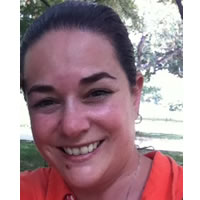 Deborah Gillick
Deborah Gillick
Liberation Diploma Plus High School, Brooklyn
During a recent education conference, Jonathan Kozol said, “we have a sacred obligation to go beyond the skills of the market place; we cannot live by bread alone.” His words connect to my regular, conscious and deliberative focus on planning lessons and engaging students in understanding concepts and skills that humanize us and transcend the business model of education. I don’t know if I have a favorite lesson; I do have a favorite practice that helps me plan and informs my instruction: Effective Questions. The better the question the better the lesson. Perhaps that sounds simple, misguided, and inadequate; I assure you it is not. There is a reason why the “Socratic Seminar” has gained much popularity as of late. It roots are ancient and it perfectly complements and augments the common core instructional shifts that center on text dependent questions and accountable-talk. Recently, students in my American Literature class were responsible for presenting a discussion centering on Jim’s interaction with Laura from The Glass Menagerie. They focused on how the characters’ conversation both illuminates as well as casts a shadow over Laura. Students prepared questions to ask the panel and each panel participant had an opportunity to respond by using the text and additional literary criticism for support. The result was a group of well prepared students who were not only thinking critically, but inviting one another to participate in the discussion and elaborate on their ideas.
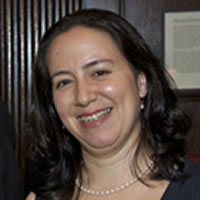 Nancy Gonzalez
Nancy Gonzalez
Ps137 M, NYC
One favorite lesson that I’ve taught my students is a multiplication lesson which is part of a Contexts for Learning Unit (Math In The City – City College), called Muffle’s Truffles. It is actually a share of students’ work, where they, after having created and investigated different multiplication arrays with square tiles and square inch graph paper (under the context of arranging different boxes for different numbers of truffles), discover some big ideas in multiplication. They discover that all arrangements have one as a factor, that some arrangements have only one way to be arranged (prime numbers), that others have many arrangements (composite numbers), and that some have special arrangements that make square boxes (square numbers). All of these ideas are discovered and explored instead of memorized without thinking. I love this math unit and so do my students when they study it.
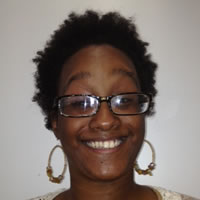 Kayla Hamilton
Kayla Hamilton
Global Technology Preparatory, Manhattan
Chrystina Russell, Principal; Donald Conyers, Superintendent; School District 4
One of my favorite lessons is a math lesson, I lead to a 6th grade self contained class. I was teaching multiplying positive and negative integers. I opened the lesson with a rap that I created about the rules of multiplying positive and negative integers. Once I read it, I asked the students to read it aloud with me. In the mini lesson, I used the analogy of talking on the phone to explain the rules and provide examples. Next, we played a kinesthetic activity that allowed the students to get out of their seats and move from one side of the classroom to another. I created plenty of space for independent practice, so I could monitor and re-teach the skill if needed. We ended the lesson with an exit slip that allowed students to write the rule in their own words as well as solve additional problems to demonstrate understanding. Overall, this is one of my favorite lessons because I was able access my creativity and provide students with different modalities of learning.
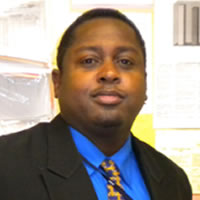 Stephen Jackson
Stephen Jackson
The Paula Hedbavny School (Ps/Ms 278), Manhattan
One interesting lesson I have done with my middle school science students is determining whether the Earth is really moving or not based on scientific data. Students were engaged in vibrant discussions at the outset some saying they did not feel it moving while others said they read it in the textbook that the Earth was moving but had no valid data to support their claims.
The lesson included differentiated teaching to have students in groups based on their learning styles and needs, research and represent their findings in various formats to share with the class.
Students were excited as they collaborated with their team members to research and complete their end products and as they shared with the class, there were questions and answers using accountable talk. The class ended with students revisiting their original viewpoints and adding evidence to their arguments.
UNIT OF STUDY: SPACE SCIENCE
AIM; What evidence is there to suggest that the Earth is in motion?
Objective: SWBAT: Explain the evidence that shows the effects of Earth’s motions.
Essential questions: Bloom’s taxonomy/ Depth of Knowledge
a) Why do seasons occur? B) How can we apply our knowledge of seasons to help us to prepare for daily activities? C) How is rotation different from revolution? D) How do you know that the Earth is in motion relative to the Sun?
Do Now/ Hook: Do you think the Earth is moving? Explain your stance with at least 1 reason for your answer.
Independent Practice/ Student task; Students will work in differentiated groups.
STUDENT GROUPS
Group I: Critical thinking/ analysis: Article review and write supporting details of evidence that shows Earth’s motion.
Group II: Kinesthetic: creating models and flash cards with vocabulary words
Group III: Enrichment: Design a PowerPoint to illustrate and explain the features of Earth’s Motions
Group IV: Artistic: Design a T chart to compare and contrast Rotation and revolution
Group V: Strivers: Complete worksheets to ensure mastery of the concepts and principles
Group VI: Intervention: review using technology games the basic features of rotation & revolution.
Science Writing Product: Portfolio Piece: Imagine you were asked to travel back in time to represent Isaac Newton as he is accused of blasphemy before the Church for saying the Earth moves around the Sun. Prepare an essay that contains updated information/ evidence to persuade Newton’s accusers that the Earth does in fact move around the Sun.
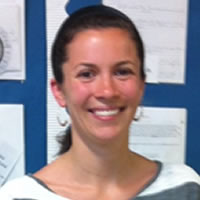 Malorie Kenny
Malorie Kenny
The Robert F. Kennedy School (P.169m), Manhattan
My desire to become involved with education in New York City generated directly from my experiences in undergraduate school at Fordham University. Recognizing how much my college experience means to me, I want my students to know it too. Most of my students know very few people who went to college, and few have ever had a realistic discussion about college. I make an effort to talk about my college and study abroad experiences regularly and get students thinking about what they want from their own college experiences.
Some of my favorite teaching moments have happened while taking students to my alma mater in the Bronx. It started with baseball games. My younger brother played baseball at Fordham so I would ask students if they wanted come to the games with me after school. They did and they loved it. They would run down the foul balls, get autographs from the players, and the day always ended with a trip to the all-you-can-eat cafeteria. But the students got a lot more out of those trips than just a ball game and unlimited soft serve ice cream. I always made sure to take them on a tour of the campus. I showed them the library, classrooms, dorm buildings, and the student center. The questions they asked both shocked and saddened me. “You are allowed to walk on the grass?” “Do you have to walk in a line?” “Do you have to wear a uniform?” “What time is curfew?” They had pictured college as a rigid institution rather than the exciting place of self and world discovery and exploration.
This past year, I contacted an old college professor of mine and asked if I could take some students to sit in on his class. He was my favorite professor and was still teaching a class that had a significant impact on me. He sent me reading material and the course syllabus so the students would be prepared for the class discussions. My students were quiet at first but then got involved in the conversations and discussions with the other students. I took them for a tour of the campus. As the day ended, students said they could picture themselves going to college. I feel fortunate to have had the opportunity to provide my students with an experience I can only hope will positively affect their futures.
 Srecko Mavrek
Srecko Mavrek
Theodore Roosevelt Educational Campus, Bronx
My favorite lesson is teaching the elementary backstroke because it can do a lot for students' swimming confidence and overall coordination in the water. Students must first be able to demonstrate competency in back floating. Learning the elementary backstroke means mastering simultaneous arm and leg movements (finning arm action and frog kick) and then learning how to co-ordinate these two elements in a unified effort to achieve a smooth and synchronous motion. I use a progressive, step-by-step teaching method on dry land and in the water that includes different team relays using pull-buoys and kickboards. The elementary backstroke is important because it gives students the confidence and competence to take themselves quickly out of dangerous deep water situations or locations in which they are too tired to use conventional swimming techniques. It is also used as a lifeguard rescue tool.
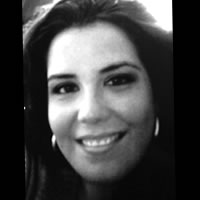 Jessica Mitchell
Jessica Mitchell
East New York Elementary School Of Excellence, Brooklyn
This year my class read the novel Wonder by RJ Palacio. I had the opportunity to watch the book's message, choose to be kind, come alive in my class. Many scholars would not participate in the teasing of others and in many cases stopped being bystanders and became proactive about preventing the bullying of their peers. While the intention behind reading the book was to analyze the characteristics of fiction and themes in a text, the social lessons learned from reading it far outweighed the academic.
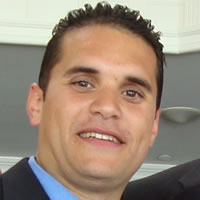 Jorge Santos
Jorge Santos
Ps/Ms 5x, Bronx
Heart Rate Lesson
Lesson Description- Sixth grade students will compare various types of physical activities. They will measure resting, training and target heart rates.
Common Core Connections- Health and mathematics.
National Health standard- students will demonstrate an understanding of concepts related to health promotion and disease prevention to enhance health.
Math Standard- students will summarize, represent, and interpret data on two different categorical variables.
PE Standard: students will demonstrate understanding of movement patterns needed to perform a variety of physical activities.
Objectives- students will collect and record data on different heart rate levels and interpret the relationship between them. They will compare and contrast and examine how each activity affects their heart rate levels.
Materials used- stopwatch, heart rate info and worksheet, jump ropes, step climbers, basketballs and basketball hoops.
Activity-
• Students will first be shown how to find their pulse. Both the radial and carotid arteries will be explained. Once students find their pulse, they will be asked to count how many times they feel their pulse in 30 seconds. Students record this data in their worksheet and multiply it by two to get their resting heart rate.
• Students will then be read the Heart Rate Info Sheet.
• Next, divide the class into three groups and assign each to three different stations in the gymnasium. The three stations will consist of a jump rope station, a step station and a basketball station. Students will stay active for a total of three minutes at each station, recording their heart rates for thirty seconds after each activity. Then students will record this data in their worksheets.
Summary Group Discussion- where can you find your pulse? What effect does the intensity of each activity have on your heart rate? How did the step climber station compare to the jumping jack station?
Assessment- students will be assessed on their behavior, on the group discussion and on their heart rate worksheet.
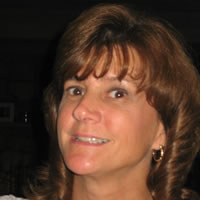 Elizabeth Sullivan
Elizabeth Sullivan
Talfourd Lawn Elementary School
P.S. 50q
My favorite lesson is one that I do at the beginning of our Procedural Writing unit. Before introducing the unit I have the students get actively involved in a “How-To” lesson by making their own ice cream. During this activity the students are learning the steps necessary to make something. They are learning the transition words first, then, next and last. They are also learning to organize their writing by making sure the steps are in the right order. When they have this hands on experience they can see before going any further if things are not in the right order. In addition to the things they are learning in writing, they are also learning math and science. The students are using measuring cups and spoons to add the ingredients and right before their eyes they get to see a liquid change into a solid. After the students have made the ice cream they get to eat it. When they are finished, as a class we do a shared writing experience where we illustrate what we did, label our drawings and write the steps that we took to make the ice cream. This shared writing piece is displayed in the classroom throughout the month so the students can refer to it as a checklist to monitor their own writing.
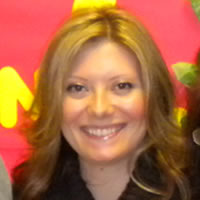 Kristen Techky
Kristen Techky
The Richard H. Hungerford School (P721), Staten Island
I am writing to express my sincere gratitude to the committee for selecting me as a recipient of the Education Update Award. I am so humbled to have been chosen for this award knowing that there were many qualified candidates.
There have been many wonderful lessons for both my students and myself over the past 5 years. This site, which is an off-site of the Hungerford School, began as a District 75 Middle School. As graduation approached the parents of our students fought to have the site shift into a High School, as they have been so happy with their child’s education. Needless to say, the Jerome Parker Campus will complete our second year as a District 75 High School the end of June.
As my students transitioned into High School I recognized their needs had changed. As a school our mission is to help our students reach their maximum potential. This past school year I had decided to begin a snack cart out of my classroom. There were many lessons involved in launching the HungerFood Express and it made its debut in November 2012. Each step needed to be broken down to make learning more manageable. I covered lessons about time management skills, consumer skills, customer services skills, and the importance of earning a paycheck, to name a few. Students shop for, stock, and sell healthy snacks to their peers and staff from the Jerome Parker Campus, as well as, staff from the three schools on the premises. The HungerFood Express has been a great success and has helped my students generalize the skills they have been learning about in the classroom. Recently, we opened a café for two periods on Friday’s where students make simple lunches and snacks. Our loaded grilled cheese sandwiches, BLT’s, and Ice Cream waffles have been a big hit with staff and students. Each of these ongoing real-life lessons have given my students the skills and confidence they need to be successful when they graduate from the Richard H. Hungerford School!
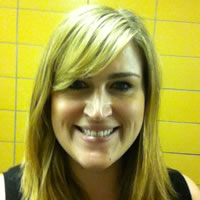 Claire Villard
Claire Villard
The Robert F. Kennedy School (P.169m), Manhattan
While I have planned and delivered many lessons, some of the most rewarding and effective lessons have been when student prior knowledge, engagement and learning align with my teaching objectives, creative activities and differentiated plans. I have experienced this particular teacher/student learning connection in a 6th grade math lesson I designed to teach ratio and proportionate relationships using ratio tables.
Using the Common Core Learning Standards, I designed the ratio table lesson to be a hands-on, group-oriented, activity-based lesson that built upon previous lessons that explored ratio relationships. The lesson objective was to apply ratio tables to plan a school party maintaining proportionate relationships. More specifically, students were divided into homogenous groups based on ability and given a party supply to calculate the total amount needed. Groups used ratio tables to determine the total amount of soda, pizza and chip supplies needed to plan a school party with respect to proportions (i.e. 1 student: 2 pizza slices).
The students were able to successfully apply their understanding of ratio proportions to collaborate and problem solve. Through careful planning and monitoring of group work, I circulated to each group to assess understanding, ask high order questions and promote further inquiry. Overall, students were engaged and learning by solving real world problems using mathematics.
ADMINISTRATORS & PRINCIPALS
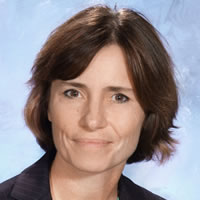 Shannon Curran
Shannon Curran
Principal, The Urban Assembly School For Law And Justice, Brooklyn
SLJ's success is hinged on its teacher leadership practices and the professional learning communities that form the foundation of the school. Every teacher and staff member is a part of a grade team and department. With a weekly grade team meeting structure and department meeting common planning time, teachers are constantly collaborating, reviewing student work and developing strategies and effective practices to support student achievement. This work is led by our teacher leaders and therefore sets forth a distributive leadership model so that the work can really get done. The Principal's job, then, is to support teacher leadership development and create collaboratively the plans to further the school's mission.
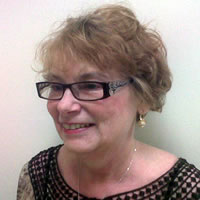 Robin Finnan-Jones, Ed.D
Robin Finnan-Jones, Ed.D
Deputy Network Leader, Children First Network 410, Brooklyn
Learning Rounds Strategy
In the 2008 school year, Santana CFN 410 began conducting Instructional Rounds across the 23 schools in the network. Instructional Rounds (City, Elmore, Fiarman & Tietel, 2009) offer opportunities to initiate inquiry into students’ learning and professional teams to gather specific data. The rounds began with small groups of principals and assistant principals visiting each other’s schools enabling all to develop a common language and understanding about the quality of student learning. Principals who invited administrators and teachers to their schools noted that the probing questions developed as the results of the rounds sometimes made them uncomfortable and noted that in order to see improvement in student achievement that one has to come out of their comfort zone to make this possible. An article was published in March 2011 issue of NYSASCD’s Impact on Instructional Improvement authored by Altagracia Santana, CFN 410 Network Leader and Robin Finnan-Jones, Deputy Network Leader entitled: Instructional rounds: A Collaborative Path to 21st Century Thinking and School Improvement. These rounds expanded to our assistant principal and teacher leader monthly meetings where a learning round was conducted in the host school. Teacher leaders were encouraged to bring the instructional rounds back to their own schools. This year, our schools have begun Learning Rounds based on this process with small groups of teachers within the schools visiting each other’s classroom to give “glow and grow” feedback to the teachers observed based on the Danielson Framework of Teaching. Before visiting the classroom of teachers who invited teacher teams to their classrooms, the teachers learned how to write low inference observation notes and based the “glow and grow” feedback on their notes. The teachers visiting the classrooms noted that they also learn strategies and techniques that they can use in their own instruction. This led to our first network wide teacher lead Learning Round this May. ESL teachers from across the network visited classrooms with the majority of Ell students in one network school and gave ‘glow and grow” feedback to the school and then developed probing questions for all regarding their work as ESL teachers. This work will form the basis for our 2013 school year network wide inquiry work on “Lesson Study.” Thus teachers will open up their doors to learning from each other as they focus on improving instruction that results in improved achievement of ALL students in their school!
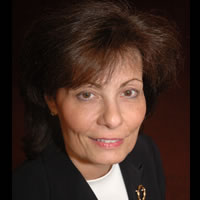 Barbara Hanson
Barbara Hanson
Principal, P.S. X010, Bronx
P10X is a special education program that is housed in eight different sites throughout the Bronx serving students with various disabilities. A strategy that is used in our school is one of ‘collaboration’.
Each week administrators and key staff members join together to speak about the different issues from our sites. Every month teachers from all disciplines gather together from the various sites to collaborate in Professional Learning Communities (PLC). In these PLC's, information is shared with teachers and discussions are held relating to various topics and how these issues affect our school, our staff, and our students. Teachers are asked for input on theses concerns and how to make improvements for our students. School goals are formulated and discussed within the PLC's and action plans are created to help achieve our goals. Teachers are asked to participate weekly in common preps to discuss planning, assessment, curriculum, instructional best practices, data and student work with their colleagues. Information is brought back to classroom teams, so that everyone can target the same goals. This creates a consistent process that is data driven to improve student success.
Working in this manner creates bonds within our school that cultivates success. During our PLC meetings, staff have input into the process; thereby providing them ownership of the success in our schools. With ownership, comes pride!
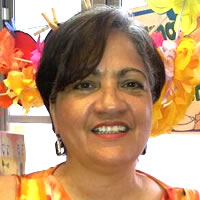 Wanda Mendez
Wanda Mendez
Assistant Principal, P.S. 155 William Paca, Manhattan
I have been an educator for approximately 23 years. At the onset of my career, I worked as a paraprofessional for several years and then as an educator. Throughout my season in the classroom as a paraprofessional, I observed numerous styles of teaching. Many of the best practices observed, I was able to add to my toolkit of strategies, and some of the instructional sessions, I modified to better understand the learning/thinking.
As a teacher, I was fortunate to have peers, and additional support from the administration to grow via collaboration and professional development.
I became an administrator, in the hopes of making a difference in the lives of children as I assisted and supported my immediate supervisor to implement and complete his/her vision.
As an administrator, transitions may at times be uncomfortable, so I strategically adapted to the situation, the staff, students and parents. The message was clearly communicated to the staff, that any support and/or feedback from administration would benefit our struggling students and provide enrichment for the grade level benchmark student. I also stated that any feedback and/or suggestions from the teachers, on the How-To to achieve our goals would be welcomed, valued, and considered.
In order, to further develop the teachers and create a sense of ownership, Interclass and Intraclass visitations were scheduled. Teachers teaching Teachers. Many of the explicit instructional lessons, identification of student learning trends/patterns, setting of goals, monitoring and modification of effective instruction were developed in these forums of collaboration, observation, coaching and team building sessions. In previous years, the teachers and I were encouraged to collect data, but now the focus moved from collecting to using the data for effective instruction. Throughout the year, teachers have been able to establish structures/systems that promote learning for all students, and have opened the lines of communication and trust. Subsequently, PD sessions are regularly conducted, focusing on student/staff needs. In addition, administration, out of classroom staff, the Network Instructional Specialist, collaborated and agreed upon strategies to ensure and achieve student success.
Today, more than ever, I without a doubt still believe that ALL children must receive the opportunity to excel and meet their maximum potential. During my experience, as an assistant principal, I discovered that the parents in conjunction with the school/teachers are the key factors to birth students that are college and career ready. College/Career students believe and embrace the understanding that they are valuable and able to compete with respect and fortitude for the prize. One of the prizes being, a well deserved strong education that equips all learners to read, write, and communicate for success in their life long experiences.
 Brian O’Connell
Brian O’Connell
Principal, Scholars’ Academy, Queens
Throughout my career I have encountered and employed a wide variety of leadership and management strategies. One very simple strategy that I utilize in my everyday work as a school building leader is an approach that I first learned about during the training I received from Dr. Noel M. Tichy, a professor of organizational behavior and human resource management. In 2003, Dr. Tichy directly trained new New York City Principals in the use of a leadership approach coined “GRPI” at the Leadership Academy, which was helmed by Robert E. Knowling, Jr..
GRPI is an acronym that stands for “Goals, Roles, Process, and Interpersonal Skills.” Although GRPI was presented to principals at these trainings as a tool for driving organizational change, I have consistently found that this simple formula works regardless of the size or type of leadership/management issue I have had to face. Whenever I have had to mobilize my team of assistant principals, the professional development team, the school leadership team, or any team of teachers or staff members within a school, I have been able to rely on “good ole GRPI.”
GRPI is a leadership and management technique of engaging ones teams of stake-holders by assessing available data to establish the organization’s goals, G, identify the roles, R, or personnel needed to pursue those goals, create a process and/or protocol, P, for the individuals and teams pursuing such goals, while employing the interpersonal skills, I, necessary to focus, empower, encourage, and hold those stake-holders accountable for their respective responsibilities to the school’s respective goals.
Since 2003, I have leveraged GRPI on several major projects, the first being the overhaul of the Belle Harbor School’s curriculum as well as staffing practices, ultimately enhancing its ranking in NYS to being within the top ten schools. GRPI also came in handy when I embarked on the daunting mission of creating the Scholars’ Academy Middle School, replacing the closing MS 180Q in 2005. In 2007, I again leveraged the simplicity of GRPI to rally my staff to create a high school component of the Scholars’ Academy. In 2009, GRPI was a significant contributor to the wildly successful “Technology Today, Smarter Tomorrow” digital initiative at the Scholars’ Academy. Recently, GRPI has helped our school juggle the demands of our curriculum overhaul with the incorporation of the Common Core Learning Standards. We now look forward to employing the use of GRPI to deal with the new Teacher Effectiveness expectations.
Perhaps the greatest benefit of GRPI is that it has also empowered my staff to better lead and manage work. Most recently, Hurricane Sandy completely disrupted our school year. 30% of our staff and 60% of our students were rendered homeless or displaced. Our students and staff were relocated to two separate schools in Brooklyn and our building’s first floor suffered millions of dollars in structural and instructional material losses. Through the empowerment and distributed leadership side effects of GRPI, my staff rallied and deftly handled the stressors and challenges that splashed upon our school. I am forever grateful for the work of my staff and resilience of our students, but it is clear to me that GRPI positively influenced the culture of our school which helped us deal with one of the greatest challenges we could have imagined. The beauty of the GRPI Leadership Strategy is that it simply gets things done while cultivating talent and ownership within ones organization.
 Sana Q. Nasser
Sana Q. Nasser
Principal, Harry S Truman High School, Bronx
I am honored to be recognized by and alongside such an esteemed group of people. As principal of one of the last large high schools in the Bronx that represents traditional core values and commitment to education, I have had the pleasure of working with many talented people. And it is because of this opportunity that my biggest strategy for running a school is to mentor and support talented individuals who share my vision for educating children. These people have become educational leaders both within and outside of my school, and they carry on the values that with me, they cultivated at Truman. Teaching, not only children but my faculty and support staff, is my greatest strategy.
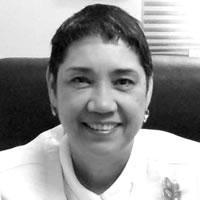 Dr. Elaine Ruiz Lopez
Dr. Elaine Ruiz Lopez
Ceo/Founder, International Leadership Charter High School(X347), Bronx
Brief explanation of a teaching and learning strategy used to lead our charter school (administrators).
One of our charter school goals is aimed toward exceeding student performance outcomes in a culture of high academic expectations. For seven years, our students are dismissed early every Wednesday afternoon in order to provide faculty, the guidance and student support team, with weekly Professional Development and Common Planning time. It is during this time that our faculty work together as a professional learning community with our Academic Coaches to review instructional goals, develop curriculum maps, conduct peer training and modeling of effective instructional strategies and review student performance data. As a result of this ongoing strategy our school community has been able to maintain and sustain a culture of high academic expectations that is evidenced by high levels of student achievement.
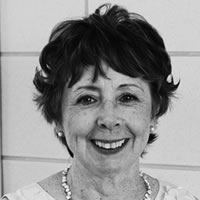 Susan Smith
Susan Smith
Supervisor of Teachers of the Visually Impaired, The Richard H. Hungerford School (P721), Staten Island
My professional career has been comprised primarily of education regarding the blind and visually impaired as teacher, consultant and supervisor. During my career, I have had the opportunity to participate with general education as well as special education across the continuum from the most restrictive setting to the least restrictive. For the last five years, I have had the unique opportunity to learn and acquire knowledge regarding students with a classification of autism in the 6:1:1 classes in a District 75 High School, specifically P 721R-The Richard Hungerford School. I also would like to take this opportunity to express my sincere appreciation to Dr. Mary McInerney, Principal of P 721R. As a result of my assignment at P 721R, I have been able to grow personally and professionally. I have Dr. McInerney to thank for contributing to my education as well.
Certain tenets have empowered me to fulfill professional responsibilities and obligations. Knowledge of child development has served me well in the educational planning for blind and visually impaired students. The individuality of the student is a consideration requiring my constant attention throughout the years. The firm belief that every parent regardless of status and stature wants the best education for their child has been a recurring daily theme for me. My interactions with students, staff and parents serve as an opportunity to address this theme. These principles have guided and directed me in implementing and facilitating education throughout my career.
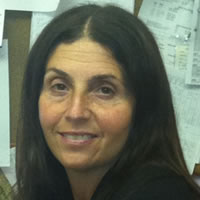 Marsha Steinberg
Marsha Steinberg
Assistant Principal, P.169m The Robert F. Kennedy School, Manhattan
Collaboration is the key to success at P169M. To ensure that all teachers are working together and learning from each other, weekly meetings are held among teachers with common educational needs. Additionally, meetings are held weekly with paraprofessionals and cluster teachers, to ensure that all communities are provided with ample time to address the learning needs of their students. Meeting with all staff is a strategy that I have implemented four years ago. I believe it is through these meetings that we have been able to embrace the common core standards, as well as graduating students that are college and career ready.
